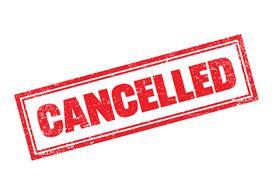Hull underwriters have not seen profit since 1996. And with many high profile losses and low premiums, the future is bleak. Michael Faulkner reports
In May, the luxury cruise ship Diamond Princess floated out of dry dock at the shipyard of Mitsubishi Heavy Industries to undergo outfitting. Her owner, P&O Princess Cruises, was looking forward to a delivery date in May 2003 and a profitable summer season in Alaska.
Five months later, the Diamond Princess was a smouldering shell, gutted by a fire that raged through the Japanese shipyard.
The London Market held its breath and waited for a damage assessment. The full contract value of the Diamond Princess was $500m (£321m). One underwriter said it could be the biggest marine hull loss ever, although insiders say the loss could be just $250m (£160m).
Marine casualties
It has been a particularly bad year for hull insurance. The Diamond Princess was only one of a long list of marine casualties: the HUAL Europe, the Limberg and the Jolly Rubino are just some of the names burned into the minds of underwriters. The Joint Hull Committee (JHC) estimates these losses to amount to $750m (£481m) globally.
And 2002 is not the only year to see significant losses. Brit syndicate marine underwriter Peter Christmas says: "The last year we got the return on capital our investors wanted was 1995 - and 1995 was a light year in terms of losses." Brit is not alone: no hull underwriter has made a profit since 1996.
The marine hull market's future is unclear. While many other unprofitable markets have seen rates rise into profitable territory, marine underwriters have failed to increase prices. It is now seen as the least profitable market - eclipsing even employers' liability (EL).
Times are good for brokers and their clients right now, as underwriters fight for accounts. But, experts say, the situation is so dire that capital providers are likely to pull out of marine hull insurance en masse, leaving brokers with little or no market. It seems that the time is ripe for a shakedown in the market.
A leading marine broker says: "The recent spate of losses has hit underwriters hard. They have had to draw their horns in and tear up their business plans. They were probably told last year to get things sorted.
"I suspect we will see closures and a shifting of capacity to other markets, such as energy."
And a Lloyd's managing agency director says: "It is hard to conceive that all capital providers will think that hull underwriters are doing a good job. Their patience will be getting worn. I would anticipate departures."
Rumours of market departures are rife. Each new loss gives rise to speculation that a particular syndicate will pull out of the hull market. But while the gossips' focus changes week by week, one thing is clear: the syndicates that have consistently been the worst performers will be under the most pressure.
Underwriters' primary concern is rates. In other markets, such as energy, rates have increased dramatically in response to losses - 1,000% on some lines. But marine hull rates are stagnant by comparison. Last year, they increased by only 20%-30%. A significant factor is that in the last seven years the number of high value risks, such as ferries and container vessels, has expanded. And premiums have failed to adjust to meet these increases.
The question is: how much do premiums need to rise? The broker says: "Assuming a loss ratio of 150%-200%, rates would need to double to return to profitability"
Excess capacity
Christmas disputes the suggestion that blanket increases are necessary: "There are certain risks where rates are way off, but others that are OK. The challenge is to get the newer tonnage and higher value tonnage right. Do this and the rest will follow," he says.
But there are difficulties in achieving higher rates. One problem is that there is too much capacity - "a $1bn ship can be placed, no problem," says the broker.
Christmas comments: "People think they can make money [in this class], but they can't. It is easy to come in. But the increase in supply undermines rates and people lose money. The challenge is to avoid the extreme cyclical nature of the market."
So, perhaps, if capital is withdrawn from the market and the number of insurers falls, it would be a good thing. Of course, brokers will argue in favour of low rates and a glut of capacity. But, in the long-term, is this good for the stability of the market? Brokers will not be pleased if syndicates start folding.
Brokers also argue that the necessary rate increases will not be achievable because policyholders cannot, or will not, pay. One marine broker says: "Shipowners can't afford increased premiums. There are more ships operating on very slender margins. Insurance is a large share of their operating costs."
But the managing agency director says: "There needs to be recognition by policyholders that they have had it pretty good: they have been sold policies at loss-leading prices."
Christmas comments: "If policyholders want a quality product they must pay for it. The last thing they want is to quibble over claims. Ultimately, we can't keep selling a product at a price that is not viable.
"In other markets, such as EL, policyholders' inability to pay has not been an issue for insurers. It should not be so in marine hull insurance."
Atrium active underwriter Christine Dandridge says: "There are other ways to skin a cat. If shipowners don't have the cash [to pay increased premiums], deductibles can be increased. This will change the loss frequency. Insurers will provide catastrophe cover only."
But rate increases and overcapacity are not the only issues that need to be addressed if the market is to become and remain profitable. Some suggest that the quality of underwriting must improve.
The director says: "One has to feel that the skill of the underwriters has a part to play in the market's problem."
But there are suggestions that things are starting to change.
Marine broker Miller director Stephen Sullivan says: "Serious changes are occurring in London. Underwriters are starting to actually underwrite, and some pretty hefty increases are beginning to take effect."
While many may welcome these developments, the hull market needs to make more fundamental changes. It is a slow and unresponsive vessel: a ponderous supertanker amid more sprightly ships.





































